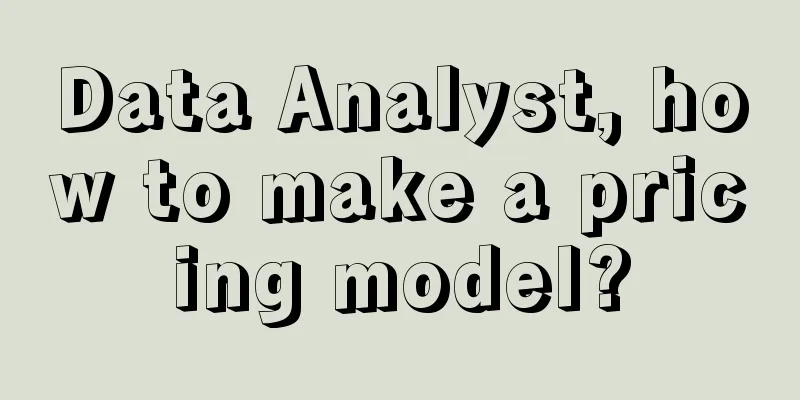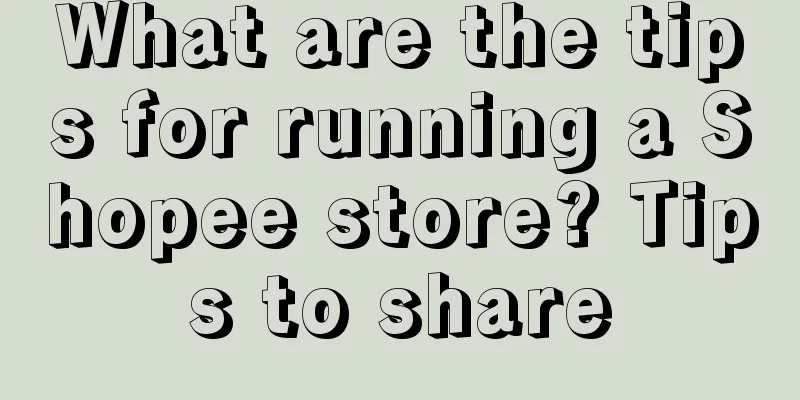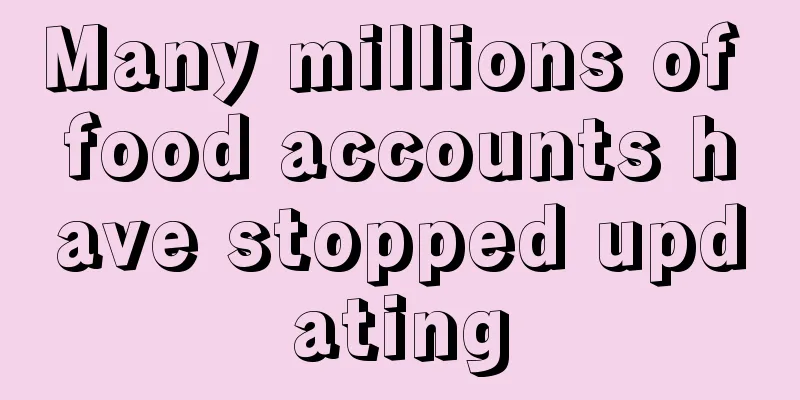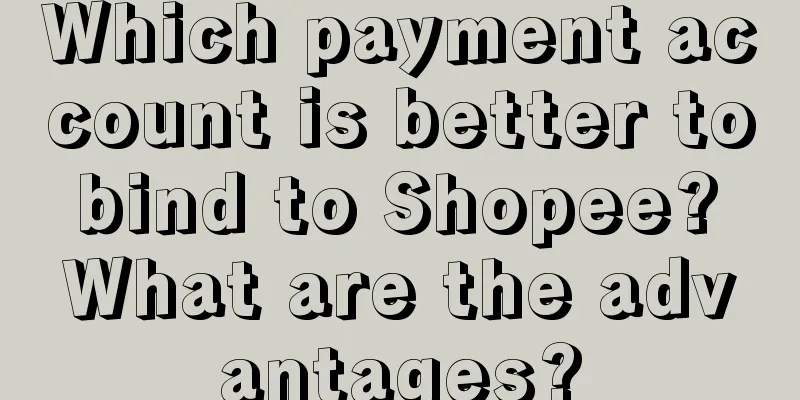Data Analyst, how to make a pricing model?

“Why is what is said in the book different from what is actually done???” In the data field, there are many knowledge points that are "understood in books but useless in practice", so students have such doubts. Taking advantage of the beginning of the year, the system will help students answer them, which will be useful in subsequent work and interviews. Among the many theories, the pricing model is the most common one. 1. Theoretical ModelThe pricing model has a standard solution in economics books.
Then take the first-order derivative of the price. When the first-order derivative is equal to 0, it is the price when the profit is maximum (as shown in the figure below). There are many similar derivatives. Because it is assumed that price is inversely proportional to sales volume, a price & sales volume change curve can be made. Correspondingly, the steeper the slope of the price & sales volume change curve, the greater the price elasticity, the product is not a rigid demand, and consumers are very sensitive to price. The smoother the slope, the more rigid the product is and the less sensitive it is to price (as shown in the figure below). It looks very simple and clear, right? But in real work, why do few people use this thing? 2. Real DilemmaThe practical difficulty is: how to know this demand function "Q=1000-4P". The instinctive idea is: I first set a price, for example, 100 yuan, and then lower it to 90, 80, 70, 60... and then raise it to 110, 120, 130, 140, so that I can measure it, right? Well, the idea is good, but there are 5 major obstacles in reality that make this gameplay impossible. Level 1: CompetitorsIf a product sells well, it is easy for competitors to target it. It is said that e-commerce players in Hebei are so powerful that they will sell imitation clothes for 9.9 yuan and free shipping before the live broadcast ends. How can they survive? The speed of competitors will not allow the price of the products that sell well to be measured slowly. Level 2: ConsumersIf a product is really 90 today and 80 tomorrow, consumers will just sit back and wait, thinking, "It's always discounted anyway, so I might as well wait and see..." So the brand is ruined by continuous discounts, and this is the scene. Level 3: FreeloadersYou may think of another form of testing: big data killing old customers. Test it by offering discounts in the background. This will easily attract the attention of the bargain hunters. If the product is easy to sell, there will be bargain hunting, smuggling, and random prices everywhere. Level 4: Industry and Commerce BureauNeedless to say, the issue of big data price discrimination is at the forefront of public opinion, and it is only a matter of time before it is criticized by the media and regulators. Of course, there is also a hidden level 5: Marketing/Sales Department. The marketing department will say: "I'm going to release this model to be a hit! A hit! Do you understand? Why are you talking nonsense?" The sales department will say: "Do you have a definite price? If there is no definite price, will you be responsible if the sales volume does not increase?!!" Not to mention the hunger marketing tactics, the first batch was limited to 100 people at 19 yuan, and if you don't buy it, the price will be raised to 199 yuan, and it is still limited to 100 people, and then it will be raised to 299 yuan, and it is still limited to 100 people... A few days later, there will be a "Cherish the hot-selling product, 199 yuan limited time return..." This routine is used in many places. Even the basic assumption that price is inversely proportional to sales volume has been broken. ╮(╯▽╰)╭ Why is there such a big difference between theory and reality? 3. Source of the problemNote: The reason why academic research is called "academic research" is because it is not equal to real-life operations. The basic approach of academic research is to abstract the basic model framework from reality, and then combine it with reality to go deeper and deeper. So there is no need to shout "Studying is useless" or "It's all bullshit" when you encounter a problem... The difference between pricing model theory and reality comes from two points First: Irrational consumption can be created in reality, which violates the basic assumption of "rational man" in economics. For example, hunger marketing mostly occurs in fan groups, which easily triggers emotional resonance and ignores the real production cost. Products of hunger marketing are often technology products, cultural and artistic products, and design products. The products are unique in design and have big gimmicks, which are easy to be withheld and sold at a high price, thus causing a rush. At this time, we should refer to the theory of marketing, not economics. Second: In reality, most companies are just small players in the market and cannot understand the overall supply and demand situation. For many commodities, if we count the sales volume of the entire industry, it is definitely inversely proportional to the price. However, for a specific company, the consumers it faces are very limited, and it is just a drop in the ocean of the entire demand curve. At this time, consumers are more likely to compare with similar competing products, so competing products can determine prices far more than consumer demand. Therefore, if you want to do a good job of pricing for your own company, it is more important to combine the characteristics of your own company with the approach of your business plan, rather than studying books blindly and trying to find the only correct answer. IV. Practical approachIn reality, there are simpler and more reliable ways to do pricing well. First: Determine the marketing planThe items to be determined include:
With the grades and competitors, the product price range is basically determined. The total sales volume and marketing rhythm determine the product pricing. Its basic strategy can be described using a matrix model (as shown below). Second: Redefine the cost baselineNote that the cost verification is exactly the same as what is described in the book. As for the cost part, except for the very metaphysical cost of Internet advertising, most other costs come from the production line, so it is easy to calculate clearly. Once you know the baseline, you can combine it with your marketing strategy to initially determine your pricing plan. If the goal is to make small profits but quick turnover, you can start a price war. If you are going for a high-end product, you have to sell it at a higher price. Third: Test new product pricingBefore the product goes on the market, there is no real price & sales data, so feedback can only be obtained through testing. There are many related methods in the field of market research, such as: The items to be determined include:
I won’t list them all here, and those who are interested can look up the market research content. In addition to research, you can also collect opinions from industry experts, dealers, and KOLs during internal product consultation, pre-ordering, and advance sales. However, most of these methods are qualitative and are not listed here. Fourth: Product price adjustment after listingAfter the product is launched, the initial price has been announced, and the subsequent price can only be adjusted based on this. However, there are many strategies for adjustment. The price increase strategy can be hunger marketing, limited edition, or bundled combination. The price reduction strategy can be big data killing old customers, discount combination, or seasonal activities. In short, through subsequent marketing means, make up for the shortfall on the basis of the initial price. Most of these are related to marketing activity planning, and I will share them separately when I have the chance. V. SummaryIn fact, whenever book knowledge collides with public psychology, social opinion, user preferences, etc., there will be more or less deviations. Not only pricing models, but also classic models such as EOQ, AHP, and probabilistic decision-making will encounter problems. I will share them with you slowly in the future, so stay tuned. Author: Down-to-earth Teacher Chen WeChat public account: Down-to-earth Teacher Chen (ID: gh_abf29df6ada8) |
Recommend
The 450-minute masterpiece has exceeded 100 million views in 5 days. Are long videos becoming popular on Tik Tok?
The Guangdong couple’s Douyin follower growth tren...
There is no top female star on TikTok
This article explores the reasons behind the lack ...
Douyin Supermarket becomes a regular store, but the end of live streaming is still the shelves
During the Spring Festival this year, the "Do...
What are the conditions for listing products on Wish? How to run a good Wish store?
In the process of opening a store on Wish, some me...
How can I do foreign trade as an individual? What preparations do I need to make?
I believe everyone is clear about the development ...
Is Dunhuang cross-border e-commerce a scam? Can we do it?
Dunhuang.com Cross-border E-commerce Platform is a...
60 explorations and reflections on branding, design, copywriting, experience and entrepreneurship
What insights do you get from talking to industry ...
Can Amazon emails be withdrawn? How to do Amazon?
Amazon's e-commerce market is huge, and now mo...
Wang Po stopped, but Henan did not
This article explores in depth how the "Wang ...
What are the tips for printing Amazon FBA labels? Tips to share
Amazon products are generally stored in warehouses...
What is the method to open a cross-border e-commerce store? How to do it?
There are many cross-border e-commerce platforms o...
How long does it usually take for Amazon to withdraw cash? What are the withdrawal rules?
Now the prospect of cross-border e-commerce is rea...
99% of physical store owners don’t know this fission customer acquisition method, which can boost customer flow
This article describes a method that a physical st...
Whoever uses it will become popular, Douyin's 10 golden 3-second hit methods
In this era of rapid development of the Internet, ...
How can I increase Wish traffic? Why is the traffic so poor?
With the rapid development of e-commerce, major pl...









